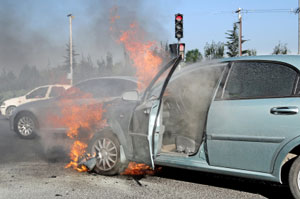
“Like a Loaded Gun” – A motor vehicle weighs many thousands of pounds, and if driven carelessly, it can lead to tragedy. People are lectured about gun safety and made aware of the associated dangers. However, a motor vehicle – a “simple” thing that transports you daily – is far more dangerous than a gun. Abuse of a loaded gun often results in a scary reminder regarding gun safety without injury to anyone. However, abuse of a vehicle will undoubtedly result in damage or injury at some point. A drunk most probably wouldn’t be able to aim the gun, but that person would be able to start a motor vehicle. This bears repeating: Abuse of a vehicle will almost always lead to harmful results. You must be aware of the tremendous responsibility involved with operating a vehicle and consider it the same as a dangerous weapon.
Section 23103 of the California Vehicle Code defines ‘reckless driving’ this way:
“A person who drives a vehicle upon a highway in willful or wanton disregard for the safety of persons or property is guilty of reckless driving…a person who drives a vehicle in an off-street parking facility…in willful or wanton disregard for the safety of persons or property is guilty of reckless driving.”
There are many things that people do when driving that, while not wantonly or willfully disregarding of the safety of others, may cause just as much damage to themselves, vehicles, and others as willfully ignoring the safety of persons and property. These things can occur when we drive carelessly, when, for one reason or another, a driver deliberately ignores or simply does not think to observe traffic laws, proven driving techniques, and common sense while operating a vehicle.
When we back up, out of our own driveway or in a parking lot, without looking, avert our eyes from the road to check a text message or take a bite of a sandwich, change lanes on the freeway without checking behind us, roll through a stop sign, or go too fast on a wet surface, we may bring about the same consequences that wanton and willful disregard for safety of persons and property can cause.
While the vehicle code may provide an operating definition of reckless driving and demarcate criminal from non-criminal actions that involve vehicles, there are innumerable actions that can be described as careless. Instead of looking at every possible careless act a driver might perform, let’s look at the consequences such an act may have.
Consequences of Careless Driving
The potential consequences of carelessness (and recklessness) behind the wheel fall into five main categories described below. These sets of consequences seldom fail to overlap or compound when carelessness results in a collision.
1. Damage to or loss of your vehicle:
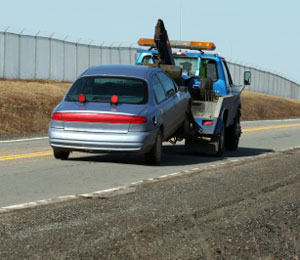
Many of the statistics we have reviewed so far have been primarily focused on numbers related to injuries and fatalities resulting from police reported motor vehicle crashes. A NHTSA report on 2010 data stated that 9,100,000 vehicles were reported damaged in vehicle crashes not resulting in injury to the occupants and approximately another 5,100,000 vehicle crashes were not reported to police. The mean property damage cost of a crash was estimated at $4,476 for reported crashes.1
2. Injury or death to you, your passengers, and/or others:
As we have already discussed, the number of crashes involving injuries in 2014 in the United States as reported by NHTSA was 1,648,000.2 In 2014, there were 32,675 traffic fatalities in the United States and 3,074 in California.3 Nationally, that’s a traffic fatality every 16 minutes and approximately 90 people died every day.4 In California, 991 (32%) fatal crashes were speed related and 882 (29%) were due to alcohol impairment.5
3. Possible auto insurance increases:
Practices vary from one insurance company to another, but in general your premium rises by a specific percentage for each chargeable claim – ones the insurer considers primarily your fault. Depending on the insurer, at-fault accidents can remain on your “insurance record” for six to 48 months meaning that you are paying a higher premium during that entire period. Even worse, if you have three or more at-fault accidents or moving violations within a 24- to 36 month period, your insurance company may choose not to renew your policy. The penalties vary from one insurer to the next.
NHTSA research has found that more than ¾ of all crash costs are paid by those not directly involved in the incident. These costs are primarily covered by insurance premiums, excess fuel consumption, increased environmental impacts, and taxes and congestion related costs due to travel delays. In 2010 society paid over $187 billion for victims of crashes. Private insurers paid approximately 54%. Individual crash victims paid almost 23%. Third-party uninvolved motorists, charities, and health care providers paid about 16% and 7% was paid through public revenue.6
4. Financial impact/legal actions/DMV actions:
Per Section 23103(c) of the California Vehicle Code, individuals convicted of the offense of reckless driving will receive between 5 to 90 days in county jail and/or a fine of no less than $145 to $1,000. If a driver is convicted of causing bodily injury to another due to reckless driving, the jail time increases to 30 days to 6 months and/or a fine of no less than $220 to $1,000 (California Vehicle Code 23104). Additionally, if you are found to be at fault in a collision you may be responsible for repairs, lost wages, medical costs, legal costs should you be sued, and auto insurance increases.
According to the NHTSA’s The Economic and Societal Impact Of Motor Vehicle Crashes, 2010 (Revised) report, in 2010 (the last year for which cost data is available) the estimated economic cost of motor vehicle collisions nationwide was $242 billion. Included in this estimated cost are lost productivity, workplace losses, property damage costs, congestion costs, insurance administration costs, emergency medical services and other medal costs, and legal/court expenses.7
5. Impact on quality of life:

All of the factors used to calculate the $242 billion economic loss due to traffic collisions in 2010 are concrete, tangible losses. The calculation of loss due to legal expenses and medical bills cannot completely calculate the societal loss of individuals severely injured or even killed in traffic crashes. The NHTSA report goes one step further and takes into account the more intangible value of lost quality of life due to vehicle crashes. When total quality of life losses are considered the total societal harm resulting from vehicle crashes is much higher and estimated to be more than $800 billion (71% represents lost quality of life and 29% is economic impact).8
Making it Personal
Costs and statistics are one thing, but let’s bring this down to a more personal level. To see how consequences ensue, imagine that you are driving along the freeway, in a hurry, engaged in an animated conversation with your passengers, take a hand off the wheel to pick up your cup of coffee out a cup holder. You are paying no attention to how closely you are following the car in front of you or how fast you are going, and you are not scanning the road ahead for brake lights. Suddenly the person in the car just ahead of you hits his brakes because he sees vehicles ahead of him slowing down. You are slow to react because you are slow to see his brake lights. Because of that and how close you are following, you slam into him. You are at fault.
There is nothing uncommon in this situation. A driver in a hurry, going too fast, tailgating, inattentive to the road, causes a rear-end collision. What is the impact of this collision on you the driver? We don’t even have to imagine the worst, a death, to see how bad this can be.
- Your vehicle is damaged so badly that it takes weeks to repair at considerable cost. You probably have to come up with the deductible, at least.
- Even if your insurance pays for the damage, your rates go up because you caused the collision.
- You are cited for tailgating and have to pay the cost of the ticket and any other associated costs (traffic violator school and insurance cost increase).
- You may be fined and/or spend time in jail, especially if your speeding is equated with recklessness.
- The collision may have injured you, your passenger(s), and the people in the car you hit.
- Aside from the costs associated with the repair of your car and your insurance, you may lose time and thus wages at work if you are injured or have to appear in court.
- The costs of others’ injuries (in excess of your insurance coverage) and lost earning time may bring about lawsuits against you personally, especially if the injuries are permanent. You may incur judgments, legal fees, and court costs over a lengthy period of time.
- For certain offenses, you may lose your driving privileges. (In some cases driving privileges may be lost for up to ten years!)
- The overall cost in time, money, emotional strain, loss of vehicle, work, etc. affects the quality of your life. A person can go from few worries to countless ones with one piece of careless driving. Additionally, your life may never be the same if you suffer a serious injury.
Contributing Factors
In 2003, the NHTSA published a study of the factors that contribute to motor vehicle collisions. The study found that the leading factors contributing to crashes were:
The study found that the leading factors contributing to crashes were:

- Driver incapacitation-illness, sleepiness, alcohol, drugs
- Driver inattention or distraction
- Driver’s vision obscured
- Vehicle defects
- Driver failure to account for environmental conditions – rain, snow, road conditions
- Speeding
- Maneuvering9
Driving distractions occur anytime a driver diverts their attention away from the driving task to focus on something else. In 2013 in the U.S., approximately 424,000 people were injured and 3,154 people were killed in motor vehicle crashes involving distracted drivers. This means that 1,161 people are injured and more than 8 people are killed every day as a result of distracted driving. In total, distraction-affected crashes were reported for 16% of all crashes, 18% of crashes resulting in injury, and 10% of fatal crashes. The age group with the highest proportion of drivers distracted at the time of crash was 15 to 19 years old. This age group contributed to 10% of all drivers involved in fatal crashes resulting from distracted driving.10
Cell phone use is very common among drivers, but it is also one of the most dangerous things a driver can do. According to the NHTSA’s National Occupant Protection Use Survey (NOPUS) in 2014, there was a statistically significant increase from 1.7 percent in 2013 to 2.2 percent in 2014 of drivers text-messaging or visibly using handheld devices. However, there was a slight decrease, 4.6 to 4.3 percent, in handheld cell phone use by drivers from 2013 to 2014. Since 2005, hand-held cell phone use continues to be higher for female drivers than male drivers and drivers aged 16-24. Additionally, in 2014 hand-held cell phone use was higher for drivers in urban areas, in the South and Midwest, and those traveling during rush hours. In 2014 at any given daylight moment approximately 587,632 vehicles (7.82%) were driven by individuals using cell phones or other electronic devices.11
Note: Chapter 4 discusses distracted driving in detail and how to avoid.
Negligent Operator Treatment System (NOTS)
Points on a Driver’s Record
The DMV keeps a public record of all your traffic convictions and collisions. Each occurrence stays on your record for 36 months, or longer, depending on the type of conviction. The Negligent Operator Treatment System (NOTS) is based on negligent operator points and consists of a computer-generated series of warning letters and progressive sanctions against your driving privilege.

You may be considered a negligent operator, when your driving record shows one of the following “point count” totals:
- 4 points in 12 months
- 6 points in 24 months
- 8 points in 36 months
Some examples of one point violations:
- Traffic convictions
- At-fault collisions
Some examples of two point violations:
- Reckless driving or hit-and-run driving
- Driving Under the Influence (DUI) of alcohol/drugs
- Driving while driver license is suspended or revoked.
If you get 4 points in 12 months, you will lose your driver license. A violation received in a commercial vehicle carries one and one-half times the point count normally assessed.
The Point System
A. An excessive number of points on a motor vehicle record will result in a license suspension or revocation by the state. The driver may be questioned about his or her driving habits, and the DMV will decide what license actions will be taken against the presumed negligent driver. Points are accumulated through traffic violations or collisions. Most moving violations call for one point on the motor vehicle record, with the point remaining for a period of 36 months. The point can often be kept off the record if the negligent driver completes a traffic violator program such as this one.
B. Some more common one-point violations are:
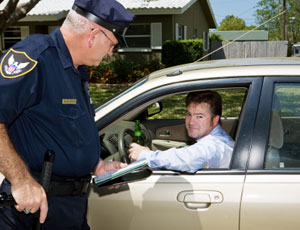
- Speeding/turning violation
- Stop sign violation
- Any traffic collision where the driver is deemed at fault.
C. Two-point violations typically remain on a driving record for a period of seven years. These are more serious offenses. Points for these violations may not be dismissed through completion of a traffic violator program.
Some more common two-point violations include:
- Exhibition of speed
- Speed in excess of 100 miles per hour
A motor vehicle operator must be aware that speed contests are highly illegal and may result in the arrest of the driver. Road fatalities are often the result of illegal racing on public highways.
- DUI (this will remain on your record for 10 years!)
- Reckless driving
- Involvement in a hit-and-run
- Intentional disregard for the safety of others on the road
- Involvement in a speed contest
E. Commercial Driver’s License Violation of NOTS
Additional points are allowed due to increased driving time on the road. Professional drivers are thus not penalized for additional time on the road due to work demands.
- 6 points in a 12-month period
- 8 points in a 24-month period
- 10 points in a 36-month period
Specific offenses will result in an automatic disqualification. A commercial driver who is convicted of a serious offense such as DUI, refusal to be tested, hit-and-run, or vehicular manslaughter, while driving any vehicle, not just a commercial vehicle, will not be permitted to drive a commercial vehicle for one year, if it is a first conviction. A second or subsequent conviction will result in the permanent disqualification of the commercial driver’s license.
For commercial drivers who hold a license from another state, the DMV will report any conviction that occurred within California to that state’s licensing agency.

F. Once you are deemed a Negligent Operator and your driver’s license is suspended, you are then subject to a probation period immediately after your license is reinstated. During that probationary period, subsequent traffic violations will result in additional penalties and the driver’s license may be revoked.
G. Losing the Driving Privilege
- Suspension – definitions:
- The license is taken away for a defined time period, after which full driving privileges are restored.
- The driver may be required to attend a driver improvement program prior to reinstatement.
- The driver may be asked to show proof of insurance prior to reinstatement.
- Revocation – definitions:
- The driver’s license is cancelled, and he or she may reapply only after the state deems the driver eligible.
- The driver may request a hearing to argue for a restricted license rather than a revoked license.
- A driver’s license will be revoked if the driver does not appear in court for a hearing, has a warrant for his or her arrest, or has an outstanding unpaid citation.
- Restricted License – definitions:
- The driver is allowed to drive only to and from work.
- The driver is allowed to drive only periodically. When given permission to drive periodically, it must be stated on the driver license and record such as to and from a DUI class, treatment facility, or anger management class, etc. It will always be spelled out in case a police officer stops the driver and needs to check.
- No further violations during the restriction period will lead to full reinstatement of driving privileges.
- A law which became effective in 2012 states that anyone who is convicted of reckless driving under Section 23103.5 of the California Vehicle Code can apply for a restricted driver license prior to the completion of their one-year suspension, provided that specified conditions are met including the installation of an Ignition Interlock Device in his or her vehicle.
Driver’s Right to Hearing
OVERVIEW – A driver who has received written notice regarding an impending license suspension or re-evaluation is entitled to a DMV hearing. During this hearing, the driver may refute any actions or arguments taken or presented and, upon conclusion, the director, referee, or hearing board will reach a decision and present findings and effects of said decision (hearing must be requested within 10 days.) The driver will waive his or her right to a hearing if he or she does not respond within the allotted 10 days. At any time, the driver may request a review of the orders, or the court can call for one, and have the decision reversed.
Although inattention and speeding are two of the most common forms of carelessness and/or recklessness, in terms of factors that contribute to collisions, nothing is more costly to an individual and to society than driving under the influence, a subject to which we now turn.

Alcohol and the Law
Alcohol is unquestionably the most abused controlled substance in the United States. Alcohol-impaired driving causes approximately 38% of all fatalities resulting from traffic collisions in California.12 Lack of acknowledgment, and even denial, of the issue’s severity by many drivers often lead to catastrophes on the road. Awareness of the signs that are commonplace in the problem drinker will help reveal any deficiencies before that person gets behind the wheel. Knowledge of the penalties associated with drinking and driving-related laws may also deter people from mixing alcohol with the often difficult task of driving. Drinking and driving is a problem that can easily ruin many lives.
It is legal to have a container of liquor, beer or wine in the passenger compartment of your car as long as:

- It is full.
- It is sealed.
- It is unopened.
An open container of alcohol in the passenger compartment of the car is against the law. The only place an opened container of alcohol may be stored in the vehicle is the trunk. If the vehicle does not have a trunk, the opened container may be stored in any area not designed for occupant use except for the glove or utility compartment. You may not have a passenger hold any open container of alcohol, regardless of where he or she is seated.
Effects of Alcohol on the Body

Alcohol is absorbed directly into the blood stream. After the alcohol is absorbed, it affects and damages many organs, including the heart, stomach, and liver. It can cause enlargement of the heart (leading to congestive heart failure), cancer of the digestive system, and possibly hepatitis and/or cirrhosis of the liver. Drinking too much at once can lead to an alcoholic coma, which in turn can lead to death. The higher learning centers of the brain are the first to be affected, followed by muscular control, and then vital functions such as digestion, breathing, heartbeat and circulation. Alcohol also affects your vision. The delicate, small muscles that control your eyes are not able to focus and move correctly. The more relaxed the muscles, the fuzzier vision becomes (this is when double vision occurs.) Other results are:
- Tendency to stare straight ahead
- Narrowing of the field of vision
- Reduction in depth perception
- Reduction of adaptability to darkness
- Increased sensitivity to glare
- Longer time to readjust after glare
Alcohol is a depressant, and it slows the activities of the brain, affecting judgment, reflexes, and coordination. If the brain receives images from the eyes that are blurry and unclear while the brain’s functions slow down, you have a great recipe for disaster. Some other effects alcohol has on the brain are:
- Reduced awareness of danger
- Reduction in balance or equilibrium
- Over-confidence (which can result in reckless driving)
- Difficulty making decisions
How Alcohol Affects Your Brain, Stomach, and Liver
BRAIN – The brain lacks an interior system of veins and requires large amounts of oxygen, which is absorbed from the blood stream. The brain is affected by anything the blood carries in it, especially since it is dispersed throughout the body, and the frontal lobe is the first part to be affected by alcohol. The frontal lobe is essential for driving a motor vehicle because it controls judgment, emotions, decision-making, and awareness. Driving a motor vehicle requires many coordinated functions that are adversely impacted by alcohol and other drugs.
STOMACH – Alcohol consumption on an empty stomach can cause a peptic or bleeding ulcer. A bleeding ulcer occurs if acid flows into the ulcerated wall and penetrates an artery. It should be clearly understood that alcohol is a toxic poison that can potentially kill.
LIVER – Blood is channeled directly from the stomach to the liver. The liver’s function is to oxidize all toxic substances in the body. The liver is capable of oxidizing approximately one ounce of alcohol per hour, regardless of the size of the person. Prolonged abuse of alcohol can severely injure and potentially kill liver cells and then the drinker. Alcohol impairs the primary functions of the liver, which are to produce blood-clotting elements, break down large proteins, store vitamin A and glycogen, and filter all the blood that goes from the intestines to the heart. When the liver is injured, it swells, and fat accumulates in the liver cells. The greater the damage, the more likely scar tissue can form, leading to cirrhosis. Vision and body nutrition can decline as a result of liver damage. Prolonged abuse of the liver will cause symptoms to appear.
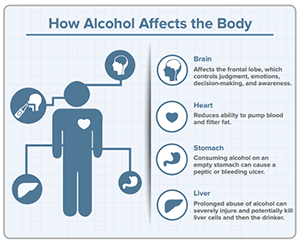
The Long-Term Effects of Alcohol On The Body
Drinking heavily over a long period of time can cause damage to many parts of the body. Damage to the brain and liver functions can be permanent. Diet is often also poor, further affecting health. Emotional difficulties, such as depression and relationship problems, are also likely.
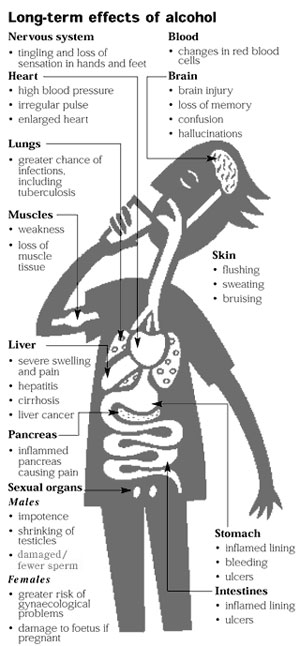
A. Blood Alcohol Level / BAC .08 percent – When a driver reaches a level of alcohol in his or her blood system of .08 percent, the driver would be legally DUI, or driving under the influence. It is illegal to operate a vehicle that requires a commercial driver’s license, with a BAC of 0.04% or higher. If a person were to consume one alcoholic drink per hour, the driver would most likely not be in danger of getting near .08 percent. Conversely, increased consumption of alcohol over a short period of time would most likely lead to an illegal BAC. For example, a 150-pound male or female consuming four alcoholic beverages (one ounce each) over a two-hour period would have a BAC of .086 percent if a male and .105 percent if a female. This exemplifies the need for individuals of varying weights and tolerances to know their own limitations. However, there is no safe way to ever drive while under the influence. Even one alcoholic drink can make you an unsafe driver on the road.
The table below describes some possible physical effects of alcohol at certain BAC levels. Remember that alcohol affects everyone differently, so do not use this table to measure how much alcohol is in your body.
| Stage | B.A.C. Level | Feeling | Explanation of Feeling |
|---|---|---|---|
| 1 | .01-.04 percent | No overt effects | Slight feeling of muscle relaxation, slight mood elevation. |
| 2 | .05-.07 percent | “Happy” | Feeling of relaxation, warmth. Slight increase in reaction time, decrease in fine muscle coordination. |
| 3 | .08-.15 percent | “Excited” | Balance, speech, vision and hearing slightly impaired. Feelings of euphoria, increase in reaction time and increased loss of motor coordination. |
| 4 | .16-.20 percent | “Confused” | Major impairment of mental and physical control. Slurred speech, blurred vision, lack of motor skills. |
| 5 | .21-.30 percent | “Stupor” | Loss of motor control — person needs assistance moving around. Minimal control of mind and body. |
| 6 | .31-.40 percent | “Close to Coma” | Unconsciousness — little to no reflexes. Subnormal temperature, lack of circulation. Threshold of a coma. |
| 7 | .41 percent + | “High Probability of DEATH” | Deep coma. Probability of death from respiratory paralysis. |
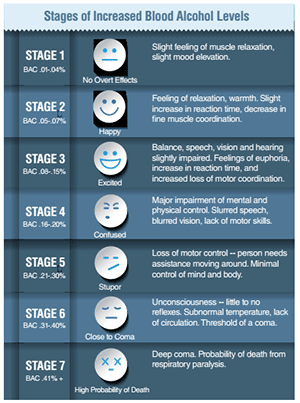
One alcoholic drink is the equivalent to a 5 ounce glass of wine, a 12 ounce beer, or 1 ½ oz. of hard liquor.
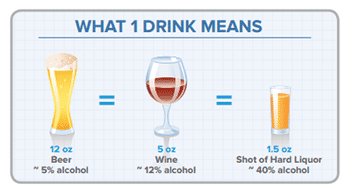
Through the liver, the human body is able to get rid of one drink of alcohol per hour. If three drinks are consumed consecutively at the beginning of an hour, the equivalent of two drinks would remain in the bloodstream at the end of that hour, as the body would only have detoxified one drink. (The liver can only detoxify a limited amount of alcohol at any given time.)

B. Zero Tolerance Law (drivers under 21) – A driver under the age of 21 suspected by a police officer of drinking alcohol is required to take a Preliminary Alcohol Screening Test (PAS) or other chemical test. If the driver’s BAC is .01 percent or higher, or if the person refuses to take the PAS, the person’s license to drive is suspended for one year. If the BAC is .05 percent or more, the driver may be arrested for DUI and be subjected to the more severe associated penalties.
C. Presumptive DUI – A peace officer can arrest an individual at a BAC he or she believes is below .08 percent based on the officer’s professional opinion that the driver is unsafe on the road. A conviction for DUI may still be imminent, despite the actual BAC level being below .08 percent.
D. Impaired Driver – An impaired driver often has consumed trace amounts of alcohol, yet still is dramatically affected as a result. Alcohol can affect individuals in many different ways, with minimal amounts doing substantial damage to one’s self-control. Alcohol alters behavior and causes a driver to become mentally and physically impaired.
E. Implied Consent – Under the Implied Consent Law ( California Vehicle Code Section 23612), a person who drives a motor vehicle is deemed to have given his or her consent to chemical testing of his or her breath, blood, or under certain circumstances, urine for the purpose of determining whether he or she is under the influence of alcohol, drugs, or a combination of drugs and alcohol, if lawfully arrested for an alleged DUI. Beginning January 1, 2013, a urine chemical test is permitted only if:
- Both blood and breath tests are unavailable, or
- The individual is a hemophiliac, or
- The individual has a heart condition or is taking anticoagulant medication as directed by a licensed physician.
If an officer suspects that you are under the influence of drugs and you have already taken a PAS and/or breath test, you may still be required to submit to a blood or urine test because the breath test does not detect the presence of drugs. These blood, breath and urine tests are actual chemical tests admissible as evidence in DUI cases and are not to be confused with Field Sobriety Tests. (FSTs are often administered on the side of the road; see “Examples of an FST” below.) Refusal to submit to a chemical test often leads to a one-year license suspension and the presumption that the driver is under the influence of alcohol or drugs. A second refusal within ten years usually calls for a two-year license revocation. In California, refusal to consent to testing is admissible evidence in court. Three or more refusals within ten years will result in a three-year license revocation.

F. Administrative Per Se Law (Admin Per Se) – The Admin Per Se law is an immediate driver license suspension or revocation law for drivers aged 21 and older arrested for driving under the influence of alcohol or other drugs. The DMV is required to suspend or revoke the driving privilege of anyone who is arrested for driving under the influence who takes a chemical test (either blood or breath) and is found to:
- Have a BAC level of .01% while on DUI probation,
- Have a BAC level of .04% while driving a commercial vehicle, and/or
- Have a BAC level of .08% or higher while driving a noncommercial vehicle
Additionally, an individual’s driver license must be automatically suspended or revoked if they refuse to take or fail to complete a chemical test (either blood or breath) to determine their BAC level. The DMV will also suspend the license of any driver under 21 with a BAC of .01% or more as measured by a PAS test or who refuses or fails to complete the test. For both the Admin Per Se and companion Zero Tolerance Laws, due process is ensured by the issuance of a 30-day temporary license, issued by either the officer or mailed by the DMV in the form of an Order of Suspension/Revocation, intended to allow the driver sufficient time to challenge the suspension through DMV administrative review (California Vehicle Code 13353.2 and 13353.3).
Drivers who completed the chemical test and were found to have a BAC level of .04% while driving a commercial vehicle or a BAC of .08% while driving a noncommercial vehicle will have their driver license suspended for 4 months for a first offense and 1 year for one or more offenses within a 10 year period (California Vehicle Code 13353.3). If the driver is under DUI probation and is found to have a BAC of .01% or higher, in addition to the Admin Per Se suspension, the DMV will impose a simultaneous one year suspension based on violation of their DUI probation during which they will not be eligible for a restricted driver license. However, if the driver refuses or fails to complete a PAS or other chemical test and was on a court-ordered probation for a prior DUI conviction, then the following penalties apply:
- For a first offense: one year suspension; a two year revocation, if on DUI probation
- For a second offense: two year revocation if within ten years of another DUI violation; three year revocation, if on DUI probation
- For a third or higher offense: three year revocation if within ten years of any combination of the previous violations, sentences, or separate administrative determinations.
G. Repeat Offenders – It is remarkable to imagine, but on average drunk drivers have driven drunk over 80 times previously before their first arrest.13 This number exemplifies the difficulty those in law enforcement have in trying to curtail the problem of the drinking driver. There are simply too many who abuse alcohol behind the wheel on the road for law enforcement to catch.
H. Dram Shop Law – The Dram Shop Law is based on the theory that all those involved with the drinking driver are somehow responsible for the problem. Bartenders, hosts, friends, and family could all be held responsible under this law. In California, as well as many other states, it is illegal for establishments to serve or furnish alcohol to those who are obviously intoxicated. But when those who are served are minors, these establishments can be held liable for any damages caused by intoxicated minors who then get behind the wheel.
I. Road Awareness – If only one DUI driver each night emerges from a local bar, restaurant, or establishment serving alcohol and gets behind the wheel, imagine the number of intoxicated drivers on our roads. All drivers should be aware that many intoxicated people leave these establishments each night and flood the highways. Late at night on the weekends are peak times for drinking drivers on the road.
J. Effects of Carbonated Drinks – Carbonated alcoholic beverages such as champagne hit the blood system and brain much more quickly than non-carbonated drinks. The drinker rarely knows the effects of the drink until it is too late. Festivities that celebrate life with a glass of champagne often lead to catastrophes because of alcohol abuse. Alcohol and driving simply do not mix!
Fines and Penalties

A simple fact of life: If you break the law, you must pay the price. However, if you drink and drive, you may also pay with your life. It’s never a good idea to drink and drive. Not only do you endanger the lives of yourself and others on the road, but you also run the chance of making a mistake that will stick with you for the next 10 years! When convicted of DUI or alcohol-related reckless driving, you will be advised of the dangers of being under the influence and that if someone dies as a result, you could be charged for murder. You will face more severe penalties if you are convicted of subsequent DUI offenses. All persons convicted of DUI will receive a restriction, suspension, or revocation of the driving privilege, without exception. The punishment for a DUI will vary with the level of intoxication in addition to other variables, but listed below are some penalties to expect:
A. First offense (without probation)
- A fine from $390 to $1,000 plus approximately 3 times the fine in penalty assessment.
- Six-month license suspension, or the court may take away your vehicle for up to 30 days.
- 96 hours to six months in jail (minimum of 48 hours should be continuous).
- Although not required, the DMV calls for attendance of an alcohol treatment program prior to reinstatement of the driver’s license. An alcohol treatment center is essentially a school for those presumed to have a serious problem with alcohol.
- Substantial auto insurance premium increase. Insurance companies evaluate many variables when assessing a person’s premium. A DUI conviction alerts the insurance company to a propensity for the driver to be involved in a drinking and driving-related incident. Cancellation of the insurance policy is common after a DUI arrest, with new policies showing dramatic increases in automobile insurance premiums.
- Attorney Fees – Legal representation in a drinking and driving case is essential. Attorneys typically charge fees in excess of $2,000 for a first-time DUI arrest.
- Two Points – A DUI conviction will result in two points on the driving record for ten years. This puts the driver in jeopardy of losing his or her driving privilege every year until the points are expunged at the end of that period.

NOTE: A first DUI offense (with probation) would include all of the aforementioned penalties with the following distinctions:
- 48 hours to six months in jail (48 hours will be continuous).
- There may be a six-month license suspension, especially if the DUI occurs in a vehicle requiring a “Class A” or “Class B” license.
- A three-month stint in an alcohol treatment program.
- IN ADDITION: For a defendant 18 to 21 years of age, the court shall order an additional one-year license suspension or delay in a license re-issuance. For defendants under 18, the DMV shall revoke the driver’s license until the person turns 18, or for one year, or for the duration of any restriction, suspension, or revocation, whichever of the three options is longer.
The preceding penalties apply to offenders with a BAC under .20 percent. For a first DUI offense with a BAC of .20 percent, the penalties are enhanced as follows:
- While under probation, the offender must spend the nine months in an alcohol treatment program that includes alcohol education, group counseling and individual interview sessions, and the time spent in the required program activities must total at least 60 hours. This also applies to those who refused to be tested.
- The mandatory driver’s license suspension period is ten months.

B. Second offense in ten years (without probation)
- A fine from $390 to $1,000 plus penalty assessment.
- 24-month license suspension.
- 90 days to one year in jail.
- Although not required, the DMV calls for attendance of an alcohol treatment program prior to reinstatement of the driver’s license.
- A restricted license may be obtained after 12 months if proof of completing the initial 12 months of an 18 or 30-month alcohol treatment program is provided, along with installing an ignition interlock device and establishing proof of financial liability.
NOTE: A second DUI offense (with probation) would include all of the aforementioned penalties with the following distinctions:
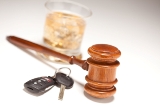
- 10 days to one year in jail.
- Restriction of driver’s license, which allows driving only to and from work and to a treatment program, along with proof of insurance throughout the entire program. An 18-month license suspension will result if the offense
- occurred in a vehicle that requires a “Class A” or “Class B” license.
- 18 or 30 months in an alcohol treatment program.
- Driving only if you file a special certificate of insurance (SR22).
- IN ADDITION: For a defendant 18 to 21 years of age, the court shall order an additional one-year license suspension or delay in license re-issuance. For defendants under 18, the DMV shall revoke the driver’s license until the person turns 18, or for one year, or for the duration of any restriction, suspension, or revocation, whichever of the three is longer. The courts may also take the vehicle away for 30 days.
C. Probation for DUI offenses – Any driver placed on probation for DUI must refrain from consuming any quantity of alcohol. If a police officer has reasonable cause to believe that a driver has been drinking, the officer may request the driver’s consent to a preliminary alcohol screening test or other chemical test. If the test shows a BAC of .01 percent or higher, or the driver refuses to submit to testing, the officer can impose an admin per se driver’s license suspension.
D. Subsequent DUI offenses – Additional jail time, fines, misdemeanor or felony offense convictions, and other penalties may result after subsequent DUI offenses. After a second DUI offense within ten years, a driver must install an ignition interlock device (IID) in his or her vehicle. This device requires a driver to blow into a mechanism that determines if there is alcohol in his or her system before driving. This device prevents the vehicle from operating if the test proves positive for alcohol. If you drive a vehicle without the device installed, that vehicle will be impounded for 30 days at your expense. Effective January 1, 2012, a court may order a 10-year revocation of the driver license if you are convicted of a third or subsequent DUI offense. If you meet certain conditions specified by the court, you may be able to apply to have your license reinstated after five years (California Vehicle Code 23597).
You may still be able to obtain a restricted license, but you must have an ignition interlock device installed, complete at least the first 12 months of an 18 or 30-month alcohol treatment program, and establish proof of insurance.
Convictions for DUI violations will remain on your record for 10 years. If you’re a repeat offender, (even if your prior conviction was over 10 years ago) you’ll have to take a drug and alcohol problem assessment program, and most likely a repeat offender program as well. 10 years is a long time; don’t make a mistake that can stick with you for that time.
E. DUI offense with injuries – When there are injuries related to the DUI offense, the violation is considered a felony. Jail time, fines, or license actions would be far more severe. Jail sentences of up to three years or more in state prison are common.
F. Ignition Interlock Device Pilot Program – Per California Vehicle Code 23700, since July 1, 2010 the counties of Alameda, Los Angeles, Sacramento and Tulare are participating in a pilot program where certain drivers will be required to install an ignition interlock device (IID) in their vehicles. Drivers whose licenses were suspended due to a DUI conviction in these counties must show proof of installation in order to have their driving privileges reinstated. Those convicted of a misdemeanor DUI offense must have the IID installed in their vehicles for:
- 5 months, if it was a first offense.
- 12 months, if it was a second offense.
- 24 months, if it was a third offense.
- 36 months, if it was a fourth or subsequent offense.
Those convicted of a felony DUI offense must have the IID installed in their vehicles for:
- 12 months, if it was a first offense.
- 24 months, if it was a second offense.
- 36 months, if it was a third offense.
- 48 months, if it was a fourth or subsequent offense.
Economic Impact of DUI
The NHTSA estimates that costs rise for everyone due to DUIs because of increases in medical and vehicle insurance rates. The costs to society include court costs, jail costs and the costs of prevention programs. There are medical, work loss, and public service costs for police, fire, and ambulance as well as costs for property damage. The NHTSA estimated that in 2010 (most recent year for which cost data is available) alcohol involved crashes accounted for $52 billion (22%) of all economic costs. Additionally, alcohol was the cause of the crash in approximately 82% of the crashes.14 Recent findings from NHTSA conclude that alcohol-impaired driving fatalities in 2014 across the United States were highest in Texas (1,446 fatalities) and then California (822 fatalities).15
It’s hard to put a price tag on a DUI for any individual. Partly this is because injuries, deaths, property damage, lawsuits, fines, jail time and loss of time at work may or may not all result from a conviction. But there will be attorney fees, fines, and insurance increases for anyone convicted of a DUI. We’ve seen that ten years is an important mark for anyone who gets a DUI. To begin with, a DUI stays on your driving record for 10 years. That means related insurance increases that will extend over that period as well as the on-going risk of losing your driver’s license until points resulting from the DUI leave your record; and as we’ve seen, penalties for subsequent DUIs within a ten year period are harsh, including fines, jail, treatment programs, license revocation, and ignition interlock programs. And this is just if you do not hurt anyone through driving drunk.
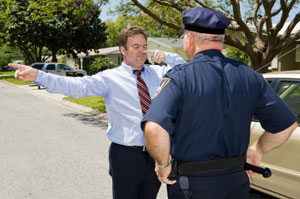
Additional Impact of DUI
In addition to the financial impact to the offender and restrictions and loss of privileges, it is important to see that DUI takes its toll emotionally on the driver, on the victims and victims’ families, and on society as a whole. No one sets out to kill or cripple another driver by driving drunk. But imagine for a moment that you do critically injure or kill someone under these circumstances. What would it be like for you to have killed someone as a result of your drinking and driving? What would it be like for you to have influenced the lives of the victim’s family in such a negative way? And what would it be like for you to deal with the financial and punitive consequences of your actions, actions that are now viewed as criminal, committed with intent, and not an accident?
The DUI Foundation reports that everyone involved in a drunk driving incident runs the risk of developing Post Traumatic Stress Disorder, a disorder “beyond depression [that] often includes experiencing flashbacks [that] interfere with…thoughts and awareness. Symptoms include nightmares, anger, trouble concentrating, over vigilance and exaggerated responses.” When a death occurs from a DUI, family and friends are ill-prepared and so that death can be much more difficult to deal with than when death is anticipated. And finally, the financial impact of the unexpected loss of the head of household can be devastating.
Example of an FST
The field sobriety test, or FST, involves a field determination of the drivers’ ability to operate a motor vehicle. The test given may include the following:
A. Balance Test – A driver may be asked to raise one leg off the ground and touch his or her nose with the index finger. A drinking driver’s equilibrium is affected, causing the driver to have trouble with this simple balance skill.
B. Walking a Straight Line – An officer may ask the driver to walk along a line on the roadway, moving his or her feet heel to toe and repeating. Again, balance is observed.

C. Counting Backwards – Speech is dramatically affected when alcohol is consumed. Counting backwards will reveal slurred speech patterns, as well as one’s ability, or lack thereof, to concentrate on a simple task.
D. Touching Finger Tips – Basic coordination is influenced adversely by alcohol. When asked to touch fingertip to fingertip, the drinking driver often has extreme difficulty.
E. Following Directions – The driver is asked to follow some basic directions that may determine his or her sobriety level. This is very difficult when alcohol is introduced to the brain.
F. Nystagmus Test – The nystagmus test relies on the effect that alcohol consumption has on the ocular nerves. Consumption of alcohol slowly weakens the eye muscles to the point where the eye can no longer follow in “smooth pursuit” of the finger or object being moved horizontally by the peace officer. An expert in this field (the peace officer) will verify that the fluttering or twitching of the ocular muscle is a direct result of the alcohol.
Statistics
Statistics often substantiate causation better than anything else. The following driving statistics show the devastating effects alcohol has on a person’s ability to operate a motor vehicle:
- In the United States approximately 9,967 people were killed in 2014 in alcohol-related motor vehicle crashes involving a driver with a BAC of .08 of higher (the legal limit).
- This equates to 1 fatality due to alcohol-impaired driving in the U.S. in 2014 every 53 minutes and account for 31% of all motor vehicle crash fatalities.
- 69% of fatal crashes in 2014 involved at least one driver in the crash with a BAC of .15 or higher.
- In 2014, 19% of the children 14 and younger killed in motor vehicle crashes were the results of alcohol-impaired drivers.16
- In 2014 in the United States, of the 451 young drivers (between the age of 15 – 20) killed who had consumed alcohol 81% had a BAC of .08 or higher (the legal limit for driver legally permitted to drink alcohol).17
- Approximately 1,117,852 individuals were arrested for driving under the influence in 2014.18
- Alcohol impaired drivers involved in fatal crashes were four times higher at night than during the day in 2014.
- Drivers between the age of 21 to 24 (30%) and 25 to 34 (29%) had the highest percentage of drivers with a BAC of .08 (legal limit) or higher in fatal crashes in 2014.19
- It has been estimated that a person arrested for his or her first DUI has been driving on the roads 80 times while intoxicated, before being arrested for DUI.20
- Legal and illegal drugs other than alcohol are involved in approximately 16% of motor vehicle crashes.21
- In 2013 in California, 1,197 people were killed and 23,178 people were injured in alcohol involved motor vehicle collisions.
- Of the 1,197 killed, 622 were drivers, 224 were passengers, 309 were pedestrians, 42 were bicyclists, and 152 were motorcyclists.
- Between 7 p.m. and 3 a.m., approximately 60% of all fatal collisions involving alcohol occurred in California in 2013.
- Additionally, in California the highest rate of fatal crashes in which a driver had been drinking was male drivers between the ages of 20 – 25.22

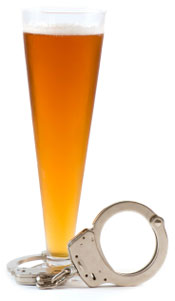
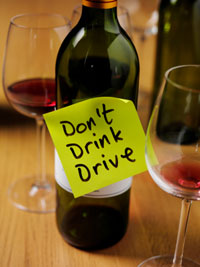
Statistics don’t lie… alcohol, motor vehicles, and people don’t mix!
Positive Statistics
- According to research by NHTSA, 2,780 lives were saved between 2009 to 2013 due to minimum drinking age laws.23
- The fatality rate due to alcohol impaired driving from 2005 to 2014 declined by 27%.24
- 2,880 fewer people were injured in alcohol involved crashes in 2013 (23,178) as compared to 2009 (26,058) in California.25
- Due to new minimum drinking age laws, lower BAC laws, and activist groups such as MADD and SADD, countless lives are being saved each year. By educating our children on the dangers of drinking and driving, we should be able to lower the number of impaired driving incidents even more…
Holidays
There is a tendency for motorists to relax during holidays. The mind is at ease, and thoughts are on upcoming festivities. The truth, however, as statistics show, is that holidays are the most dangerous times to be on the road. More people are drinking alcohol, more chaos associated with children in the vehicle exists, and the overall driving task is made more difficult.
Let’s review some of the numbers for alcohol involved collisions during certain holidays for California in 2013:
- New Years (12/28 to 1/1) – 306 injured and 18 fatalities
- Memorial Day – 326 injured and 15 fatalities
- 4th of July – 399 injured and 28 fatalities
- Labor Day – 285 injured and 22 fatalities
- Thanksgiving (11/27 to 12/01) – 326 injured and 13 fatalities 26
The statistics cited above are only one way to demonstrate the threat that drunk driving has to our safety. The following video examines the events and decisions that led up to a drunk driving incident and the impact it has on those affected.
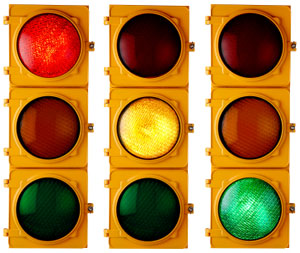
Signs of a DUI Driver
Alcohol often causes a person to drive abnormally on the road. Alcohol is a depressant that slows bodily functions. Reduced tension and lowered inhibitions are common, causing the drinking driver to take risks he or she normally would not. Decision-making is also greatly altered, as clear and concise thought is difficult. In addition to breaking basic traffic laws, the impaired driver often exhibits the following driving traits:
A. Speeding – Alcohol affects a person’s ability to decide right from wrong, which includes safety in general. Speed is often increased, and unsafe chances behind the wheel are often taken.

B. Driving Slowly – In a futile attempt to hide their intoxication, impaired drivers often drive substantially below the speed limit.
C. Weaving – The drinking driver loses focus on the road and may fall asleep or simply lose control of the vehicle. Coordination begins to deteriorate, with weaving the most obvious and common driving trait.
D. Lights – Lights – Alcohol adversely affects basic brain functions, such as memory. Turning on driving lights may be overlooked, resulting in a dangerous situation with a dark car on the road.
E. Windows – Drinking drivers often believe cold air will keep them awake while driving. An open car window in cold weather late at night is often a sure sign that the driver is intoxicated.
F. Lane Straddling – Drinking drivers often use lane dividing lines as guides to stay on the road. This is an obvious indication of an intoxicated driver, as focus is lost and every attempt is made to stay on the road.
G. Tailgating – Tailgating is a basic driving violation, but it is especially common with the drinking driver. Vision becomes impaired, depth is distorted, and the eyes react more slowly to lights.
H. Turning Difficulty – A drinking driver may signal to turn one way and then erratically turn the other way. It is very common for the impaired driver to make unusually wide or narrow turns. Motor skills are at extremely diminished levels.
If you spot a driver you suspect to be drunk, be prepared to take quick, evasive action. Never pass a drunk driver’s vehicle. Avoid pulling over to the shoulder if you are being tailgated, if possible – the driver, if drunk, may be using your tail lights to stay within traffic and thus may hit you from behind. Instead, make a quick turn onto the nearest cross street or parking lot when it is safe to lose that driver.
Ways to Sober Up
There is no easy remedy for chronic or short-term abuse of alcohol. The only way to sober up is to allow the liver time to detoxify and thus gradually reduce the level of alcohol in the system. This is a process called “oxidation,” or enzymatic detoxification. Food and coffee are often perceived as viable ways to dilute alcohol in the system, but they are misconceptions. Oxidation occurs in the liver, and little can be done to either slow or speed up this process. Water consumed while drinking dilutes alcohol in the body and may lessen the effects on the brain. However, this does not reduce the BAC. Water cannot reverse the effects of hours of drinking.
The Only Proven Solution: Sleep and Time – As a depressant, alcohol usually induces sleep. Sleep allows time for the liver to detoxify and dissipate the alcohol from the system. Time allows the liver to detoxify the alcohol. The body can only absorb one ounce of alcohol per hour, meaning a .08 percent BAC would require at least eight hours to be fully detoxified by the body.
SUMMARY
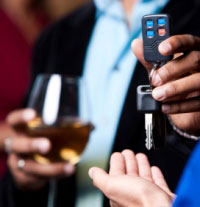
As of now, no one has discovered a practical, effective and quick way to extract alcohol from the body. Several problems occur when you consume too much alcohol. Alcohol concentrates in your inner ear and disturbs your sense of balance. It can trap needed nutrients and waste products in the liver, therefore inflaming the liver cells. Alcohol interferes with a phase of deep sleep, causing you to have a poor night’s rest. It also causes dehydration. Traditional remedies do not work. Coffee may give you a caffeine boost, but it will not ease the symptoms. Fruit juice may re-hydrate the body a bit, but it may also upset your stomach, as will aspirin. REST IS THE ONLY WAY TO REPAIR THE DAMAGE.
DUI Prevention
Designated Driver Program – The designated driver program was developed to help deter drinking and driving while encouraging sober, designated drivers. One person in a group is discouraged from drinking alcoholic beverages and made responsible for the rest of the group. This person will drive the others home, ensuring that those who may be intoxicated and dangerous will not be driving on the roads.
Designated drivers often receive support from the establishments where they and their friends drink and eat, and they sometimes receive complimentary non-alcoholic drinks and food. Some of the requirements to participate as a designated driver include:

- Must possess a valid driver’s license.
- Must be in a group of two or more people.
- Must identify self verbally.
- Must not consume any alcoholic beverage throughout the evening.
- Should be at least 21 years of age.
- Must understand that management reserves the right to refuse service to anyone at anytime.
These programs have helped contribute to a decline over the last 10 years in DUI-related deaths. The drinker often cannot consciously help him or herself and needs a friend to step forward. Designated Drivers Save Lives!
Other Drugs
A driver’s use of drugs other than alcohol (cocaine, marijuana, and many prescription and over-the-counter medications to name a few) can also create significant problems on the road. Any two or more drugs taken at the same time may cause a reaction called “synergism.” This reaction sometimes causes the enhancement of the effects of one or more of the drugs. The most dangerous combination of synergism is alcohol and drugs. A driver who combines any amount of alcohol and drugs that potentially affects his or her driving abilities is not only dangerous, but IN VIOLATION OF THE LAW.
Cannabis
| Type | What is it called? | What does it look like? | How is it used? |
|---|---|---|---|
| Marijuana | Pot, Reefer, Grass, Weed, Dope, Ganja, Mary Jane, Sinsemilla | Dried parsley, with stems and/or seeds; rolled into cigarettes | Smoked or eaten |
| Tetrahydrocannabinol | THC | Soft gelatin capsules. | Taken orally |
| Hashish | Hash | Brown or black cakes or balls | Smoked or eaten |
| Hashish Oil | Hash Oil | Concentrated syrupy liquid varying in color from clear to black |
Smoked — mixed with tobacco |
The use of cannabis may impair or reduce short-term memory and comprehension, alter sense of time, and reduce the ability to perform tasks requiring concentration and coordination, such as driving a car. Marijuana can also produce paranoia and psychosis. The use of cannabis has both negative physical and mental effects. Physical effects of cannabis include a substantial increase in the heart rate, bloodshot eyes, a dry mouth and throat, and increased appetite. Because users often inhale the unfiltered smoke deeply and then hold it in as long as possible, marijuana is extremely damaging to the lungs.
Cocaine
| Type | What is it called? | What does it look like? | How is it used? |
|---|---|---|---|
| Cocaine | Coke, Snow, Nose candy, Flake, Blow, Big C, Lady, White, Snowbirds | White crystalline powder | Inhaled, injected |
| Crack Cocaine | Crack, rock, freebase | White to tan pellets or crystalline rocks that look like soap | Smoked |
Cocaine is a stimulant that affects the central nervous system. Immediate effects of cocaine use include dilated pupils and elevated blood pressure, heart rate and body temperature. The use of crack or freebase is extremely addictive, and the effects are felt within 10 seconds. The physical effects include dilated pupils, increased pulse rate, elevated blood pressure, insomnia, loss of appetite, tactile hallucinations, paranoia, and seizure. Cocaine or crack can cause death by cardiac arrest or respiratory failure after just one use.
Other Stimulants
| Type | What is it called? | What does it look like? | How is it used? |
|---|---|---|---|
| Amphetamines | Speed, Uppers, Ups, Black beauties, Pep pills, Copilots, Bumblebees, Hearts, Benzedrine, Dexedrine, Footballs, Biphetamine | Capsules, pills, tablets | Taken orally, injected, inhaled |
| Methamphetamines | Crank, Crystal meth, Crystal methedrine, Speed | White powder, pills, rock that resembles a block of paraffin | Taken orally, injected, inhaled |
| Additional Stimulants | Ritalin, Cylert, Preludin, Didrex, Pre-State, Voranil, Sandrex, Plegin | Pills or capsules | Taken orally, injected |
The use of stimulants can cause an increase in heart and respiratory rates, elevated blood pressure, a loss of appetite, and dilated pupils. Large doses of stimulants will cause irregular heartbeat, tremors, loss of coordination, and even physical collapse. Long-term use of stimulants can cause an amphetamine psychosis that includes hallucinations, delusions, and paranoia.
Depressants
| Type | What is it called? | What does it look like? | How is it used? |
|---|---|---|---|
| Barbiturates | Downers, Barbs, Blue devils, Red devils, Yellow jacket, Yellows, Nembutal, Tuinals, Seconal, Amytal | Red, yellow, blue, or red and blue capsules.\ | Taken orally |
| Methaqualone | Quaaludes, Ludes, Sopors | Tablets | Taken orally |
| Tranquilizers | Valium, Librium, Miltown, Serax, Equanil, Tranxene | Tablets or capsules | Taken orally |
The effects of depressants are similar to those of alcohol. Large doses of depressants can cause respiratory depression, coma, and death. The combination of depressants and alcohol can magnify the effects of the drugs, increasing the risks. The regular use of depressants will cause physical and psychological addiction. Babies born to mothers addicted to depressants can have birth defects and behavioral problems.
Hallucinogens
| Type | What is it called? | What does it look like? | How is it used? |
|---|---|---|---|
| Phencyclidine | PCP, Hog, Angel dust, Loveboat, Lovely, Killer Weed | Liquid, white crystalline powder, pills, capsules | Taken orally, injected, smoked (sprayed on joints or cigarettes) |
| Lysergic acid diethylamide | LSD, Acid, Microdot, White lightning, Blue heaven, Sugar cubes | Colored tablets, blotter paper, clear liquid, thin squares of gelatin | Taken orally, licked off paper, gelatin and liquid that can be put in the eyes |
| Mescaline and Peyote | Mesc, Buttons, Cactus | Hard brown discs, tablets, capsules | Discs-chewed, swallowed, or smoked. Tablets and capsules-taken orally |
| Psilocybin | Magic mushrooms, ‘shrooms, mush, magic | Fresh or dried mushrooms | Chewed and swallowed |
Mixing the use of hallucinogens with driving is an extremely dangerous practice. The use of most hallucinogens interrupts the functions of the neo-cortex, which is the part of the brain that controls the intellect and keeps instincts in check. Time and body movement are slowed down. Muscular coordination worsens, and senses are dulled. The physical effects of LSD include dilated pupils, elevated body temperature, increased heart rate and blood pressure, loss of appetite, sleeplessness, and tremors.
Narcotics
| Type | What is it called? | What does it look like? | How is it used? |
|---|---|---|---|
| Heroin | Smack, Horse, Mud, Brown sugar, Junk, Black tar, Big H | White to dark-brown powder or tar like substance | Injected, smoked or inhaled |
| Codeine | Empirin compound with codeine, Tylenol with codeine, Codeine in cough medicine | Dark liquid varying in thickness, capsules, tablets | Taken orally, injected |
| Morphine | Pectoral syrup | White crystals, hypodermic tablets, or injectable solutions | Taken orally, injected, or smoked |
| Opium | Paregoric, Dover’s powder, Parepectolin | Dark brown chunks, powder | Smoked, eaten, or injected |
| Meperidine | Pethidine, Demerol, Mepergan | White powder, solution, tablets | Taken orally, injected |
| Other narcotics | Percocet, Percodan, Tussionex, Fentanyl, Darvon, Talwin, Lomotil | Tablets or capsules | Taken orally, injected |
Narcotics cause an initial feeling of euphoria that is often followed by drowsiness, nausea, and vomiting. An overdose may produce slow and shallow breathing, clammy skin, convulsions, coma, and possibly death. A tolerance to narcotics comes very quickly, and dependency is very likely. Addiction in pregnant women can lead to premature, stillborn, or addicted infants who experience severe withdrawal symptoms.
Designer Drugs
| Type | What is it called? | What does it look like? | How is it used? |
|---|---|---|---|
| Analog of Fentanyl (Narcotic) | Synthetic heroin, China white | White powder | Inhaled, injected |
| Analog of Meperidine (Narcotic) | MPTP (New heroin), MPPP, synthetic heroin | White powder | Inhaled, injected |
| Analog of Amphetamines or Methamphetamines (Hallucinogens) | MDMA (Ecstasy, XTC, Adam, Essence), MDM, STP, PMA, 2, 5-DMA, TMA, DOM, DOB, EVE | White powder, tablets, or capsules | Taken orally, injected, or inhaled |
| Analog of Phencyclidine (PCP) | PCPy, PCE | White powder | Taken orally, injected, or smoked |
The law defines illegal drugs by their chemical formulas. To get around these legal restrictions, chemists have modified the molecular structure of certain illegal drugs to produce similar drugs known as designer drugs. These drugs can be several hundred times stronger than the drugs they are designed to imitate. Use of designer drugs can cause uncontrollable tremors, drooling, impaired speech, paralysis, irreversible brain damage, nausea, blurred vision, chills or sweating, faintness, anxiety, depression, and paranoia.

Over-the-Counter Drugs
Over-the-counter drugs can cause similar reactions to many of the drugs listed above. Drivers may experience the effects of drowsiness, lack of attentiveness, confusion, loss of decision-making ability, and altered vision. Always read and follow the instructions and warning labels before taking any medication. READ ALL LABELS ON DRUG CONTAINERS. You can be convicted of DUI for driving while under the influence of an over-the-counter drug.
1 Blincoe, L. J., Miller, T. R., Zaloshnja, E., & Lawrence, B. A. (2015). The Economic and Societal Impact Of Motor Vehicle Crashes, 2010 (Revised). DOT HS 812 013. National Highway Traffic Safety Administration. Retrieved from https://crashstats.nhtsa.dot.gov/Api/Public/ViewPublication/81201.
2 National Highway Traffic Safety Administration (NHTSA). (2016). 2014 Summary of Motor Vehicle Crashes . DOT HS 812 263. Retrieved from https://crashstats.nhtsa.dot.gov/Api/Public/ViewPublication/812263.
3 National Highway Traffic Safety Administration (NHTSA). (2014). Traffic Safety Facts California 2010-2014. Retrieved from http://www-nrd.nhtsa.dot.gov/departments/nrd-30/ncsa/STSI/6_CA/2014/6_CA_2014.pdf.
4 National Highway Traffic Safety Administration (NHTSA). (2016). 2014 Summary of Motor Vehicle Crashes . DOT HS 812 263. Retrieved from https://crashstats.nhtsa.dot.gov/Api/Public/ViewPublication/812263.
5 National Highway Traffic Safety Administration (NHTSA). (2014). Traffic Safety Facts California 2010-2014. Retrieved from http://www-nrd.nhtsa.dot.gov/departments/nrd-30/ncsa/STSI/6_CA/2014/6_CA_2014.pdf.
6 Blincoe, L. J., Miller, T. R., Zaloshnja, E., & Lawrence, B. A. (2015). The Economic and Societal Impact Of Motor Vehicle Crashes, 2010 (Revised). DOT HS 812 013. National Highway Traffic Safety Administration. Retrieved from https://crashstats.nhtsa.dot.gov/Api/Public/ViewPublication/812013.
7 Ibid.
8 Ibid.
9 Campbell , Brittany N., Smith, John D. & Najm, Wassim G. (2003) Examination of Crash Contributing Factors Using National Crash Databases. DOT HS 809 644. USDOT, NHTSA, Research and Special Programs Administration, Volpe National Transportation Systems Center. Retrieved from http://ntl.bts.gov/lib/jpodocs/repts_te/14098/14098.pdf.
10 National Highway Traffic Safety Administration (NHTSA). (2015). Traffic Safety Facts – Distracted Driving 2013. DOT HS 812 132. Retrieved from http://www.distraction.gov/downloads/pdfs/Distracted_Driving_2013_Research_note.pdf.
11 National Highway Traffic Safety Administration (NHTSA). (2015). Traffic Safety Facts – Driver Electronic Device Use in 2014.DOT HS 812 197. Retrieved from https://crashstats.nhtsa.dot.gov/Api/Public/ViewPublication/812197.
12 The California Highway Patrol. (2013). 2013 Annual Report of Fatal and Injury Motor Vehicle Traffic Collisions. Retrieved from: https://www.chp.ca.gov/InformationManagementDivisionSite/Documents/2013-sec5.pdf.
13 Jewett, A., Shults, R. A., Banerjee, T., & Bergen, G. (2015). Alcohol-Impaired Driving Among Adults — United States, 2012. Center for Disease Control and Prevention – Morbidity and Mortality Weekly Report (MMWR). 64(30);814-817. Retrieved from http://www.cdc.gov/mmwr/preview/mmwrhtml/mm6430a2.htm.
14 Blincoe, L. J., Miller, T. R., Zaloshnja, E., & Lawrence, B. A. (2015). The Economic and Societal Impact Of Motor Vehicle Crashes, 2010 (Revised). DOT HS 812 013. National Highway Traffic Safety Administration. Retrieved from https://crashstats.nhtsa.dot.gov/Api/Public/ViewPublication/812013.
15 National Highway Traffic Safety Administration (NHTSA). (2015). Traffic Safety Facts – Alcohol-Impaired Driving. DOT HS 812 231. Retrieved from https://crashstats.nhtsa.dot.gov/Api/Public/ViewPublication/812231.
16 Ibid.
17 National Highway Traffic Safety Administration (NHTSA). (2016). 2014 Traffic Safety Fact Sheet – Young Drivers. DOT HS 812 278. Retrieved from https://crashstats.nhtsa.dot.gov/Api/Public/ViewPublication/812278.
18 The Federal Bureau of Investigation (FBI). (2014). 2014 Crime in the United States. Table 29 – Estimated Number of Arrests. Retrieved from https://www.fbi.gov/about-us/cjis/ucr/crime-in-the-u.s/2014/crime-in-the-u.s.-2014/tables/table-29.
19 National Highway Traffic Safety Administration (NHTSA). (2015). Traffic Safety Facts – Alcohol-Impaired Driving. DOT HS 812 231. Retrieved from https://crashstats.nhtsa.dot.gov/Api/Public/ViewPublication/812231.
20 Bergen, G., Shults, R. A., Rudd, R. A. (2011). Vital Signs: Alcohol-Impaired Driving Among Adults — United States, 2010. Center for Disease Control and Prevention – Morbidity and Mortality Weekly Report (MMWR). Retrieved from https://www.cdc.gov/mmwr/preview/mmwrhtml/mm6039a4.htm.
21 Compton, R. P. & Berning, A. (2015). Drug and Alcohol Crash Risk. DOT HS 812 117. National Highway Traffic Safety Administration (NHTSA).
22 The California Highway Patrol. (2013). 2013 Annual Report of Fatal and Injury Motor Vehicle Traffic Collisions. Retrieved from: https://www.chp.ca.gov/InformationManagementDivisionSite/Documents/2013-sec5.pdf.
23 National Highway Traffic Safety Administration (NHTSA). (2015). Traffic Safety Facts – Lives Saved in 2013 by Restraint Use and Minimum Drinking Age Laws. DOT HS 812 137. Retrieved from https://crashstats.nhtsa.dot.gov/Api/Public/ViewPublication/812137.
24 National Highway Traffic Safety Administration (NHTSA). (2015). Traffic Safety Facts – Alcohol-Impaired Driving. DOT HS 812 231. Retrieved from https://crashstats.nhtsa.dot.gov/Api/Public/ViewPublication/812231.
25 The California Highway Patrol. (2013). 2013 Annual Report of Fatal and Injury Motor Vehicle Traffic Collisions. Retrieved from: https://www.chp.ca.gov/InformationManagementDivisionSite/Documents/2013-sec5.pdf.
26 The California Highway Patrol. (2013). 2013 Annual Report of Fatal and Injury Motor Vehicle Traffic Collisions. Retrieved from https://www.chp.ca.gov/InformationManagementDivisionSite/Documents/2013-sec7.pdf.



